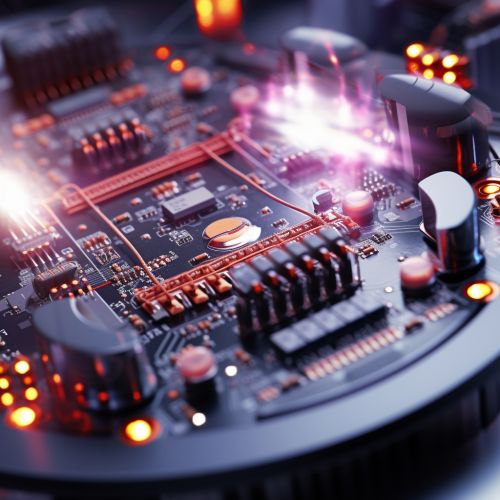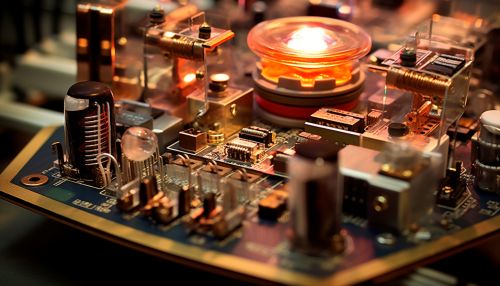Optoelectronics
Introduction
Optoelectronics is a sub-discipline of photonics that deals with the study and application of electronic devices that source, detect and control light, usually considered a sub-field of photonics. In this context, light often includes invisible forms of radiation such as gamma rays, X-rays, ultraviolet and infrared, in addition to visible light. Optoelectronic devices are electrical-to-optical or optical-to-electrical transducers, or instruments that use such devices in their operation.


History
The field of optoelectronics emerged in the 20th century with the development of semiconductor technology. The discovery of the photovoltaic effect and the invention of the transistor laid the groundwork for the development of optoelectronic devices. The first practical optoelectronic device, the light-emitting diode (LED), was developed in the 1960s. Since then, the field has expanded to include a wide range of devices and applications.
Principles of Optoelectronics
Optoelectronics is based on the quantum mechanical effects of light on electronic materials, especially semiconductors. The fundamental principles of optoelectronics include the emission, transmission, amplification, and detection of light. These principles are applied in the design and operation of optoelectronic devices.
Optoelectronic Devices
Optoelectronic devices can be broadly classified into light-emitting devices and light-detecting devices.
Light-Emitting Devices
Light-emitting devices convert electrical energy into light. Examples of light-emitting devices include light-emitting diodes (LEDs), organic light-emitting diodes (OLEDs), and laser diodes.
Light-Detecting Devices
Light-detecting devices convert light into electrical energy. Examples of light-detecting devices include photodiodes, phototransistors, and photomultiplier tubes.
Applications of Optoelectronics
Optoelectronics has a wide range of applications in various fields such as telecommunications, medicine, military, and consumer electronics.
Telecommunications
In telecommunications, optoelectronics is used in the transmission of information over long distances using light signals. This is achieved through the use of optical fibers and optoelectronic devices such as laser diodes and photodiodes.
Medicine
In medicine, optoelectronics is used in various diagnostic and therapeutic applications. For example, optoelectronic devices are used in endoscopy, laser surgery, and photodynamic therapy.
Military
In the military, optoelectronics is used in various applications such as night vision, target acquisition, and laser guidance systems.
Consumer Electronics
In consumer electronics, optoelectronics is used in devices such as televisions, smartphones, and digital cameras.
Future of Optoelectronics
The future of optoelectronics lies in the development of new devices and applications. This includes the development of quantum optoelectronics, bio-optoelectronics, and nano-optoelectronics.
